Gladiators
Everyone knows the iconic movie poster above. It invokes the idea and concept of gladiators. There is an understanding that these "fighters" were unique to ancient Rome and fought in amphitheaters or even the most famous amphitheater: the Flavian Amphitheater: i.e The Colosseum.
Where did they fight:
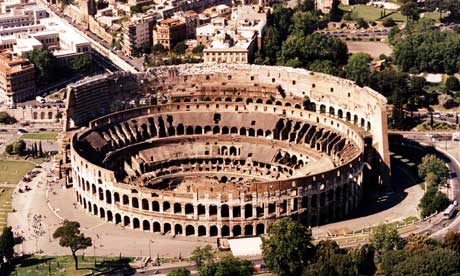 |
| The Colosseum completed 80AD. |
 |
| The Colosseum was capable of holding 50,000- 80,000 spectators. |
 |
| The Colosseum is situated just east of the Roman Forum. |
The Colosseum housed various forms of entertainment during its lifetime from gladiatorial contests and public spectacles such as mock sea battles, animal hunts, executions, re-enactments of famous battles, and dramas based on Classical Mythology.
However, while the Flavian Amphitheater( the Colosseum) is the most recounted of the amphitheaters; there are about 230 remains or sites of other ancient Roman amphitheaters. A list of locations and some pictures may be found here.
Who Fought:
Gladiator ,from the Latin gladius which means sword, comes to mean swordsman.
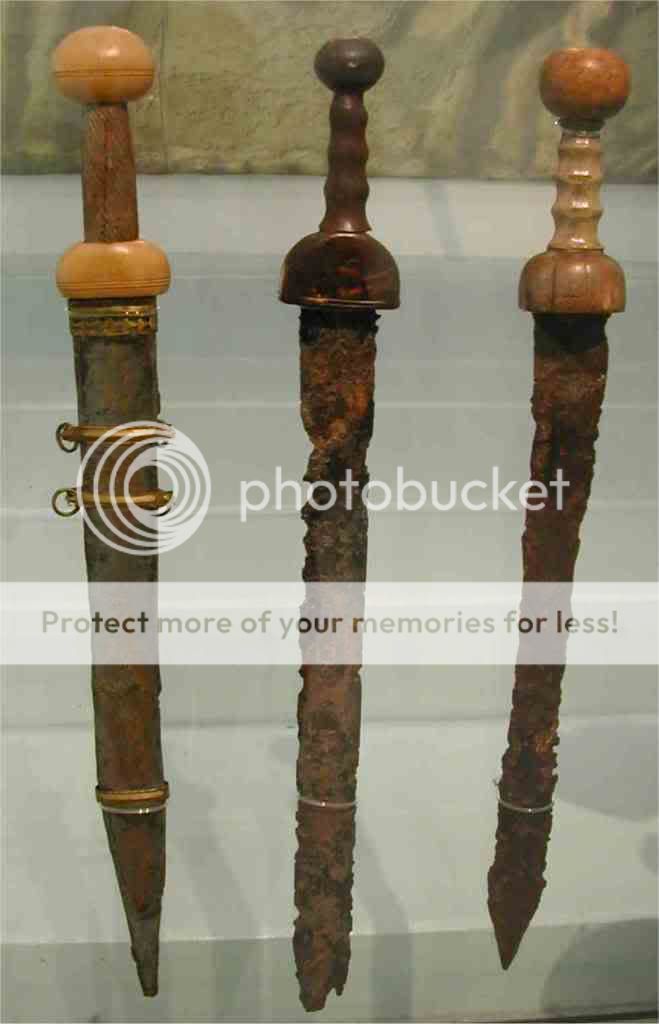 |
| Gladii; Roman short swords. |
Gladiators were normally slaves , but later on free men also volunteered to be gladiators( to settle a debt or to win large sums of money) and, by the end of the Republic, comprised half the number who fought. Often, they were social outcasts, freed slaves, discharged soldiers, or former gladiators who had been liberated on retirement but chose to return for a period of service.
 |
| Gaius Suetonius Tranquillus |
It is claimed in Suetonius' "The Twelve Caesars (21.6)" that Gladiator use to address the emperor in the Colosseum before their match: "Ave, Imperator, morituri te salutant" or "Ave, Caesar, morituri te salutant" ( " Hail, Emperor, thoses who are about to die salute you!)" This moment can be seen in the film Gladiator.
"It's all thumbs to me." Who Judged:
It should be noted however, that similar to the film not all gladiatorial games or ludi were held at Rome's Colosseum , nor were they all viewed by the emperor. There would be an overseer of a gladiatorial match, but that person varied from a senator, general, wealthy patron, and so on. However, the overseer or editor would usually be the one made the "judgment call" of life and death or thumbs up or down( Pollice Verso , meaning with thumb turned).
 |
| Pollice Verso: 1872 Gladiator painting by Jean-Leon Gerome. |
 |
| Pollice Verso by Gerome (closer detail of spectators) |
For more on Pollice Verso (Turned Thumbs) please refer to the University of Chicago's page: Pollice Verso
Types of Gladiators:
| Gladiators from the Zliten mosaic 200 AD |
The following is a clip from the Gladiator film and it should be advised that it is very bloody. If you choose to view the video (I would advice watching the whole film); please pay close attention to the types of gladiator armor, helmets, and fighting implements.
 |
| Thraex Helmet |
The Second Gladiator who is wearing the head of some beast is unknown. Apparently, the ancient Romans would put on mime shows after a fight in which entertainer would wear animal heads, but not during a fight traditionally. Perhaps he is reminiscent of the Time Bandit's Minotaur:
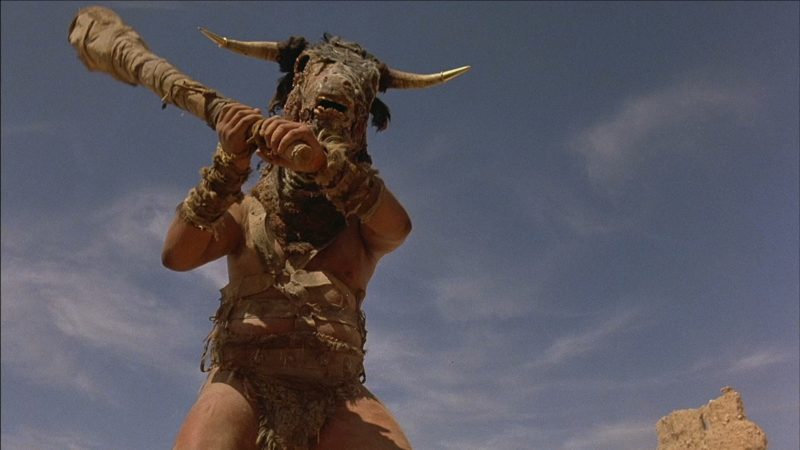 |
| Time Bandit Minotaur |
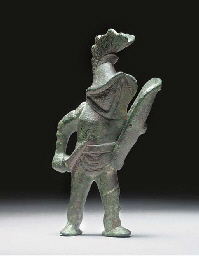 |
| CIRCA 2ND CENTURY A.D. Murmillo |
The fourth Gladiator which we see Juba fighting is not a real gladiator either. He appears to have
helmet with horns, but there are no mosaics or record literature describing such a helmet. However, his blade that he wields is interesting. It would appear to be similar to the blade that a Thraex would have: a sica. Perhaps they all share weapons and gear!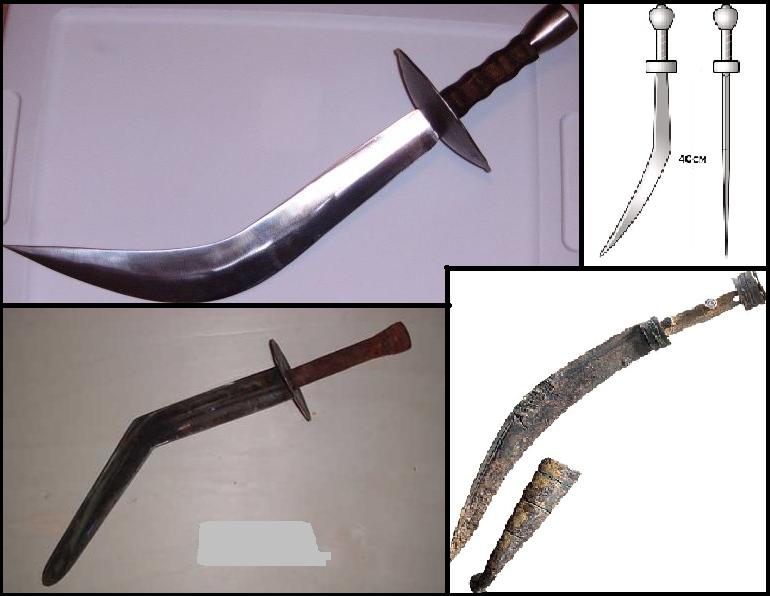 |
| Sica |
 |
| A retiarius ("net fighter") with a trident and cast net, fighting a secutor (79 AD mosaic). |
Thus, Hollywood may have some historical accuracies, but time is money. So, does a movie producer spend five extra hours researching proper gladiator equipment, or does he spend two hours to have some historian consult give him the basics to get the feel of ancient Rome.
Gladiators as Sex Symbols
Thracian gladiator is the delight of all the girls
There is an inscription on a wall in Pompeii that says the Thracian gladiator Celadus was "suspirum et decus puellarum," literally "the sigh and glory of the girls."
Gladiator sweat and fats of the animals fighting in the arena were sold in souvenir pots outside of the games to improve complexion. BBC
For more information refer to the post: Love Potion IX
In reference to the title of this post: Lions, Tigers, and Gladiators, some gladiators actual fought animals. These can be seen in Hollywood's blockbuster Gladiator along in some mosaics.
 |
| Maximus fighting a Tiger and Gladiator |
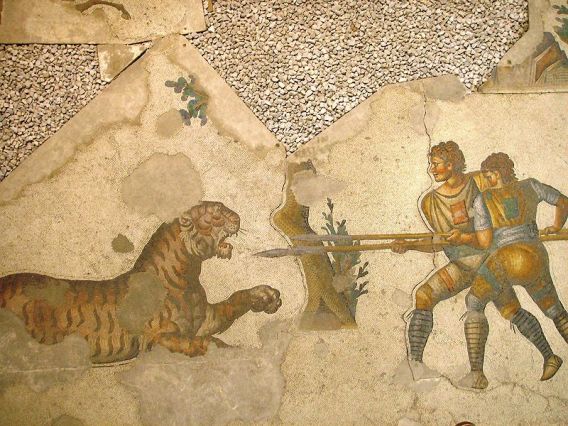 |
5th Century Mosaic from Istanbul of gladiators fighting a tiger |
The following video discuss the making of the Colosseum and the fighting of with the Tigers!
As Hollywood discovers interesting stories and possibly film ideas, it is important to recall what has already been done: Ancient Rome Movies




nice, can you do a blog of warriors of mesopotamia?
ReplyDeleteA Classics And Ancient History Blog: Lions, Tigers, And Gladiators; Oh My! >>>>> Download Now
ReplyDelete>>>>> Download Full
A Classics And Ancient History Blog: Lions, Tigers, And Gladiators; Oh My! >>>>> Download LINK
>>>>> Download Now
A Classics And Ancient History Blog: Lions, Tigers, And Gladiators; Oh My! >>>>> Download Full
>>>>> Download LINK